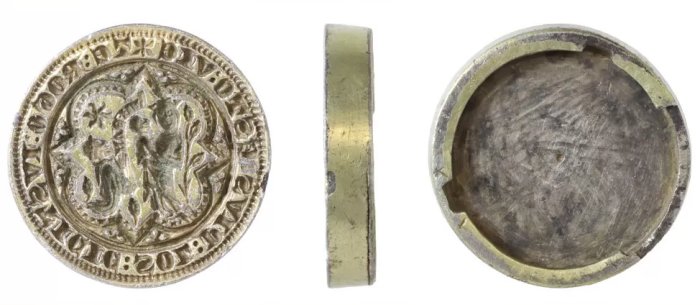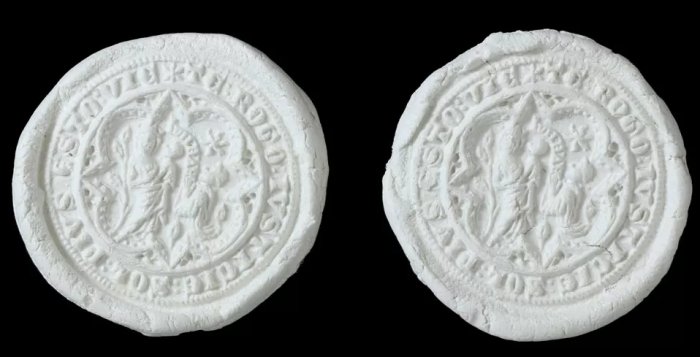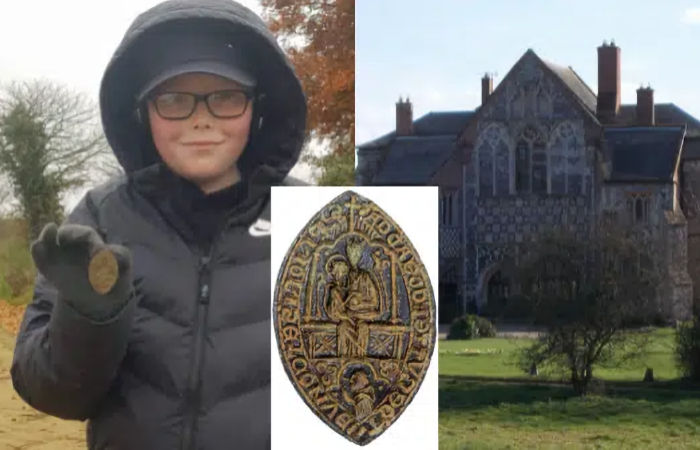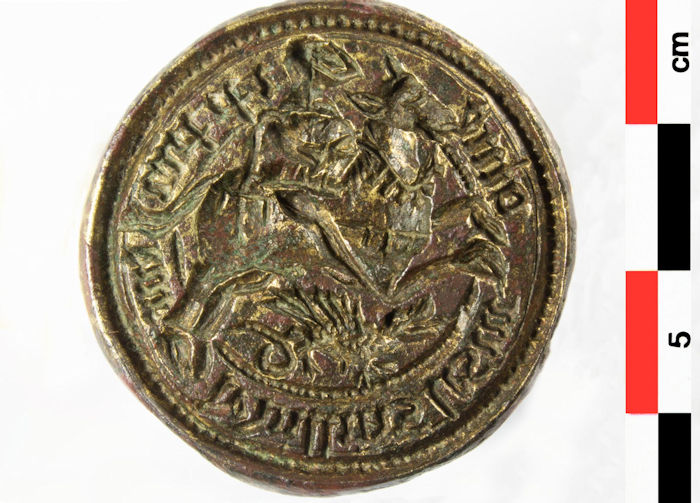Jan Bartek – AncientPages.com – Found in a field, near Horsham St Faith north of Norwich, UK, by a metal detectorist this beautiful seal matrix has been hailed as “completely unique” by experts.
Most likely, the Medieval seal matrix belonged to a monk. This beautiful and rare artifact is “a window into someone’s spiritual world just before the Black Death,” experts said. On the seal matrix there is an inscription that reads: “I beseech thee, holy sun of righteousness, be the way.”
 The 24.6mm (0.9in) gilded silver object was designed for a detachable handle. Credit: Andrew Williams/Norfolk County Council
The 24.6mm (0.9in) gilded silver object was designed for a detachable handle. Credit: Andrew Williams/Norfolk County Council
According to historian Dr. Helen Geake, this is a “really sophisticated object with a really good design”, and the inscription has not been encountered elsewhere.
“It’s completely unique, we don’t have anything to compare with this inscription.
“The ‘sun of righteousness’, appears in the Old Testament, towards the end of a set of prophecies, and became a relatively common way of referring to Jesus Christ in the Middle Ages,” Dr Geake, Norfolk’s find liaison officer told the BBC.
The medieval Latin inscription reads TE: ROGO: IVSTICIE: SOL: PIVS: ESTO: VIE / AVE MA.
As reported by the BBC, “the 24.6mm (0.9in) seal, which dates to the late 13th or early 14th Century, covering the reigns of Edward I to Edward III, was found in April in a field near Horsham St Faith.
Its detailed design includes a crowned Virgin Mary holding the Christ child and kneeling to her right is a monk looking up at her, identified by his tonsure.
He would have attached the matrix to a handle and used it to stamp an impression on wax to authenticate documents.

In a wax impression, the Virgin Mary holding the Christ child can be seen on the left, while on the right a tonsured monk kneels before her. Credit: Andrew Williams/Norfolk County Council
Dr Geake said another “unusual” aspect of the find is that it appears to be designed for “a detachable handle, with the matrix rotating either to lock it in position, or to remove it, as if interchangeable die could be used with the same handle”.
The die is the part of the matrix which stamps wax.
“It’s unique in two different ways – it’s interchangeable and it has this little, private prayer,” Dr Geake said.
“It’s a window into someone’s personal, emotional or spiritual world in the years before the Black Death.”
The pandemic swept through Europe between 1347 and 1351, with a huge loss of life.
The find is the subject of a coroner’s inquest.”

George Henderson showing the Medieval seal matrix he discovered. Credit: Hansons Auctioneers
Seal matrices are beautiful ancient objects that are important to study as they offer valuable information about history, culture, and beliefs. In 2022, a young boy discovered a very rare Medieval seal matrix while treasure hunting with his father in Suffolk, England.

The bronze seal matrix has an engraving of St George slaying the dragon. Credit: Serge Le Maho, Inrap
See also: More Archaeology News
The rare bronze seal matrix of St. George slaying the dragon discovered in a French castle is equally impressive. The seal matrix that may have belonged to the prior of the Saint-Georges monastery, in Villers-les-Moines, dependent on the abbey of-la-Chaise-Dieu (in Auvergne) comes with a legend written in Gothic letters.
Written by Jan Bartek – AncientPages.com Staff Writer





